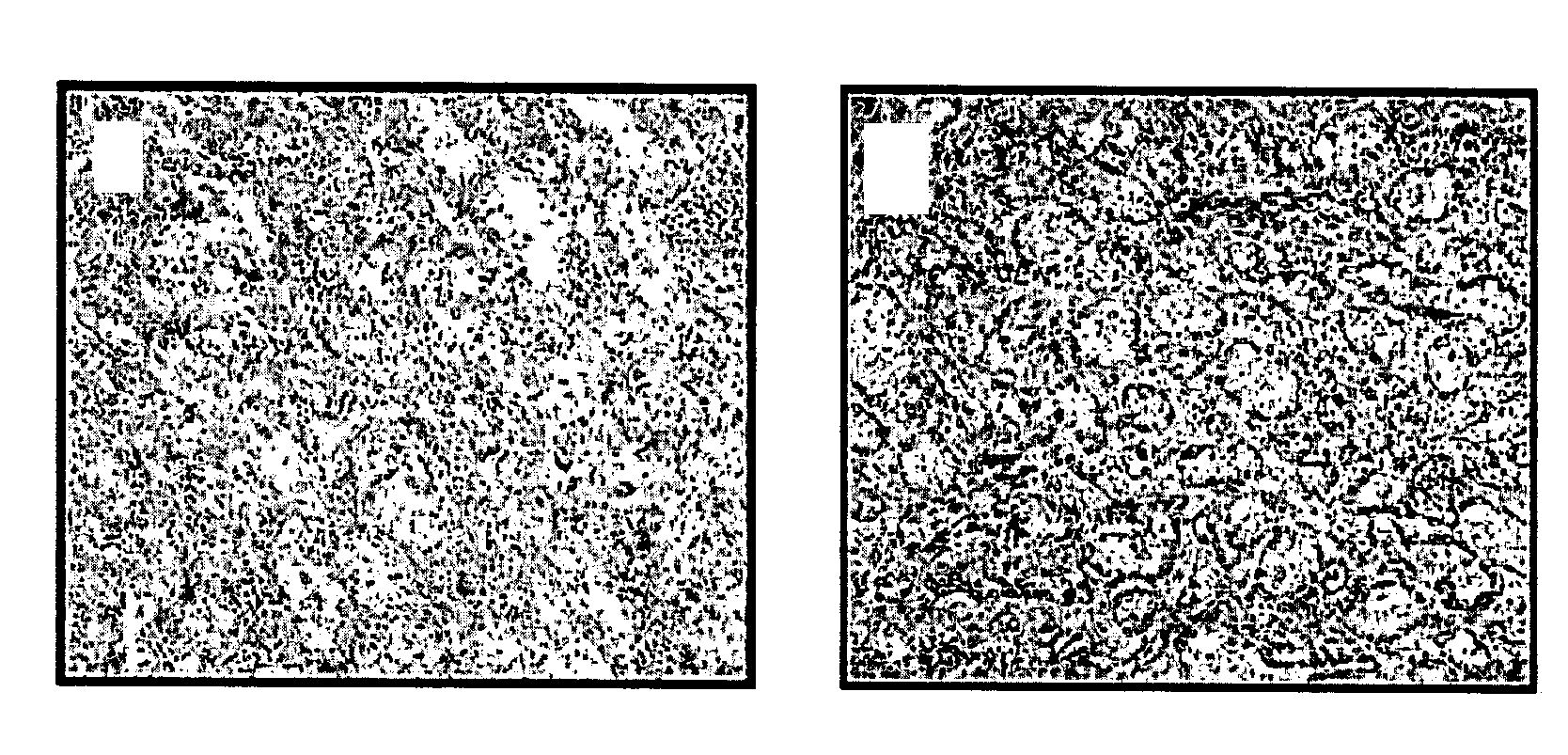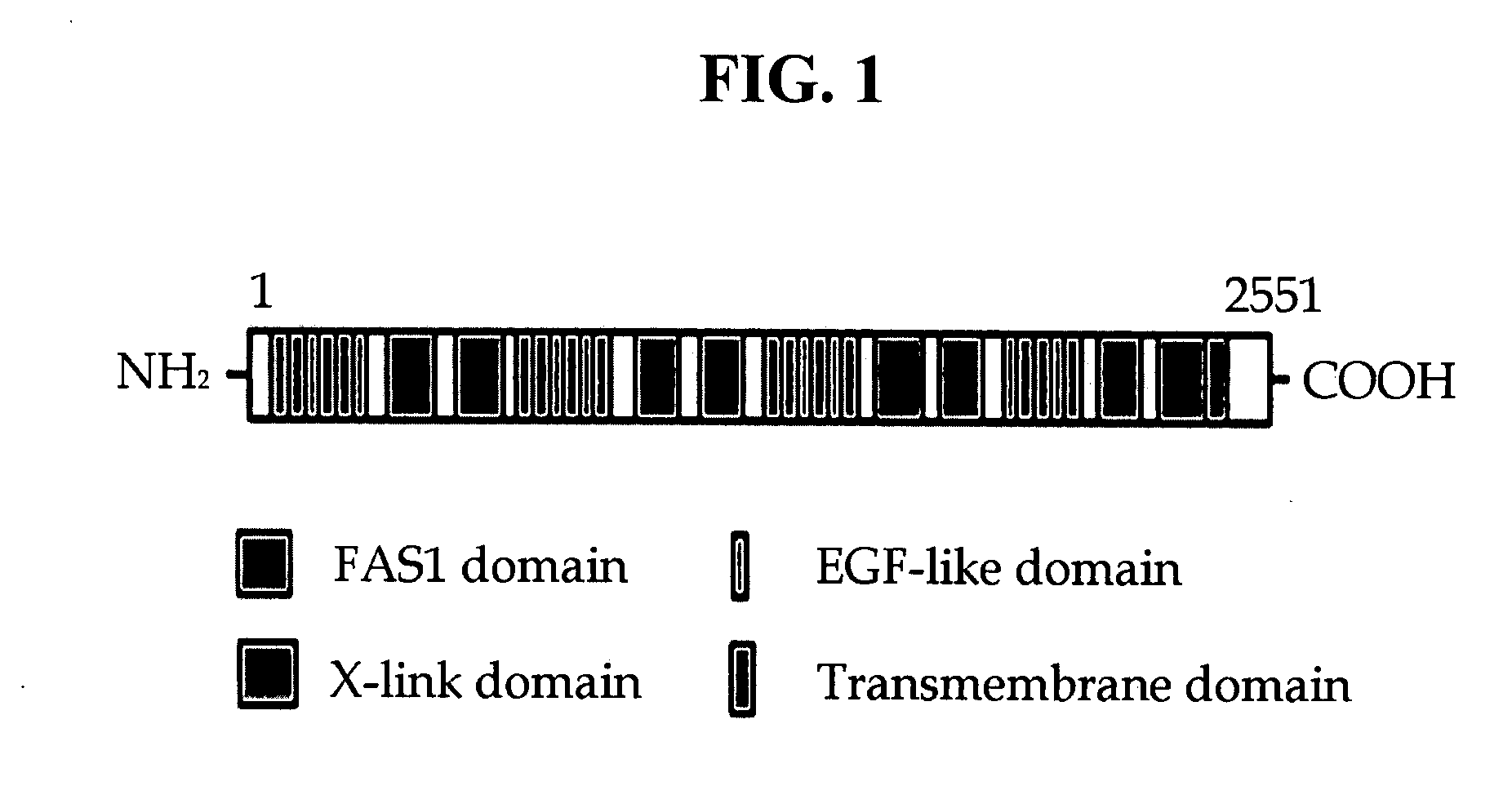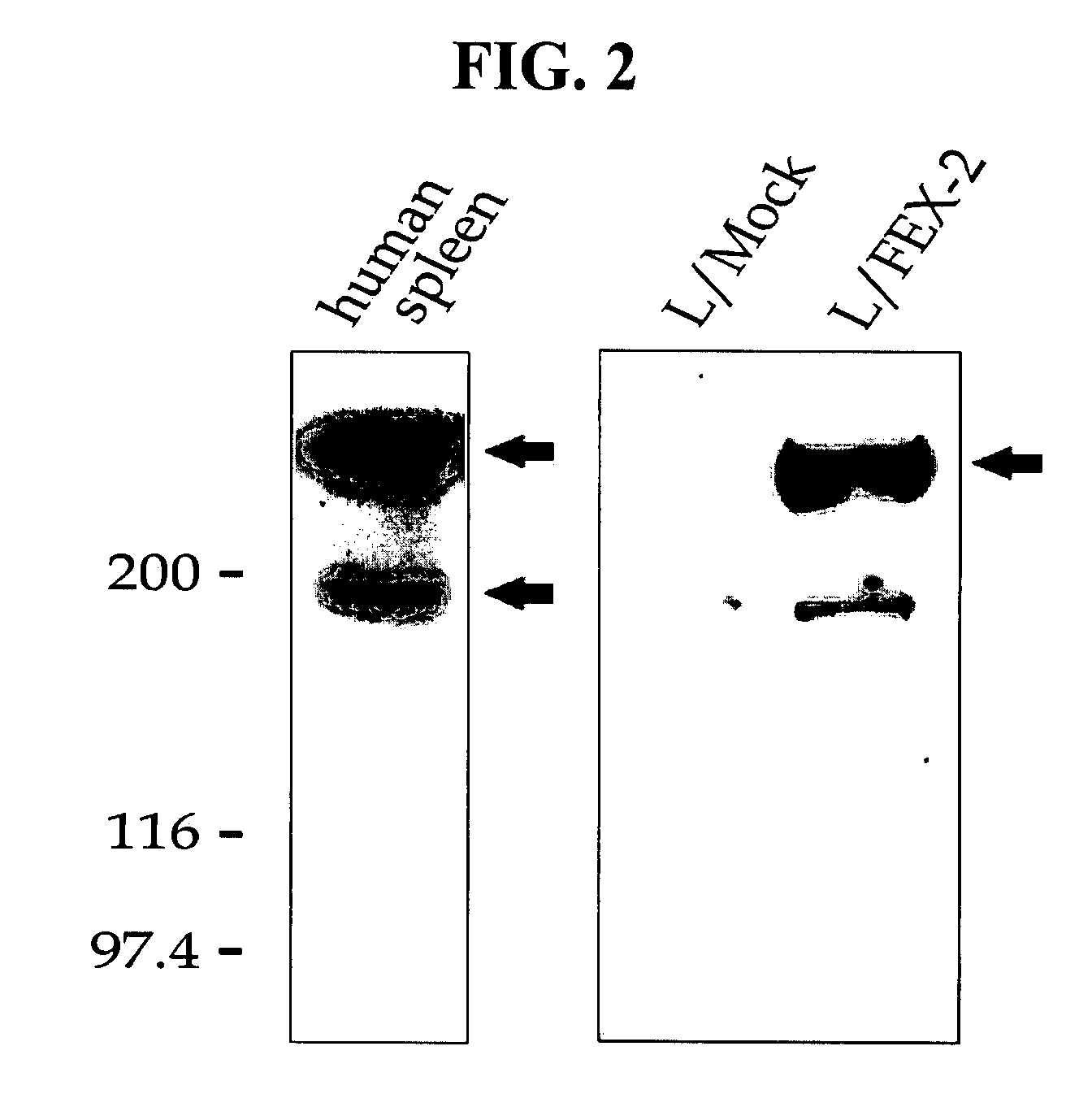Method and pharmaceutical composition for preventing or treating diseases associated with inflammation
- Summary
- Abstract
- Description
- Claims
- Application Information
AI Technical Summary
Benefits of technology
Problems solved by technology
Method used
Image
Examples
example 1
Cloning of Human FEX-2 cDNA
[0141] Construction of Expression Vector
[0142]To identify a novel cell adhesion molecule comprising fas-1 domains, sequences comprising fas-1 domains were searched nucleotide database such as Genebank and Celera genomics. After the search, non-characterized partial human cDNA clones (FLJ00012, DZKZp434E0321, CD44-like precursor FELL) were selected. The full-length cDNA sequence was designed from the human spleen tissue, by means of RT-PCR and 5′ RACE PCR.
[0143]First, two pairs of primers (sequence Nos. 67 to 70) were designed by using the above three partial cDNA clones derived from the human spleen, comprising fas-1 domains (Table 1). Next, RT-PCR (reverse transcriptase polymerase chain reaction) was performed by using 2 μg of RNA extracted from the human spleen, as a template, and each pair of primers designed as described above, so that two segments of the partial cDNA of a protein comprising fas-1 domains were obtained. The PCR reaction was performed u...
example 2
Production of Polyclonal Antibody and Monoclonal Antibody Against FEX-2
[0150] Production of Polyclonal Antibody Against Human FEX-2
[0151]To produce polyclonal antibodies against human FEX-2, cDNA comprising a sequence corresponding to amino acids 554 to 655 from the complete human FEX-2 amino acid sequence (sequence No. 1) and cDNA comprising a sequence corresponding to amino acids 2188 to 2551 were produced by PCR amplification. The cDNAs were obtained by means of PCR using the pcDNA-Fex2 DNA according to Example , as a template, and the following primers (sequence Nos. 76 to 79) (Table 2). The PCR reaction was performed under the following conditions: 2 min at 95° C.; and 25 cycles of, 30 sec at 94° C., 30 sec at 60° C. and 30 sec at 72° C. The amplified product comprising the sequence corresponding to amino acids 554 to 655 was digested by restriction enzymes SalI and HindIII (TaKaRa) and inserted into pET-29b vector (Novagen) at the sites of the same restriction enzymes. The amp...
example 3
Determination of FEX-2 Expression on L / FEX-2 Cell Surface
[0162] Fluorescence-Activated Cell Sorting (FACS) Analysis
[0163]The monoclonal human antibody (5G3) specific to FEX-2, produced in the above Example , was used in FACS analysis, in order to determine whether FEX-2 was expressed on the surface of L / FEX-2 cells according to the above Example .
[0164]A confluent plate, in which L / FEX-2 cells were cultured, was treated with PBS comprising 0.25% trypsin and 0.05% EDTA to detach the cells from the plate surface. The cells were washed with PBS twice, and resuspended in PBS. The monoclonal anti-FEX-2 antibody 5G3) was added to the cell suspension and cultured at 4° C. for 1 hour. Then, 10 μg / ml of FITC-conjugated rabbit anti-mouse secondary IgG antibody (Santa Cruz Biotechnology, Inc., CA) was added to the cell culture. Then, the cells were further cultured at 4° C. for 1 hour, and analyzed at 488 nm by using a flow cytometer equipped with a 5 watt laser (FACS Calibur system, Becton Di...
PUM
| Property | Measurement | Unit |
|---|---|---|
| Adhesion strength | aaaaa | aaaaa |
Abstract
Description
Claims
Application Information
 Login to View More
Login to View More - R&D
- Intellectual Property
- Life Sciences
- Materials
- Tech Scout
- Unparalleled Data Quality
- Higher Quality Content
- 60% Fewer Hallucinations
Browse by: Latest US Patents, China's latest patents, Technical Efficacy Thesaurus, Application Domain, Technology Topic, Popular Technical Reports.
© 2025 PatSnap. All rights reserved.Legal|Privacy policy|Modern Slavery Act Transparency Statement|Sitemap|About US| Contact US: help@patsnap.com



